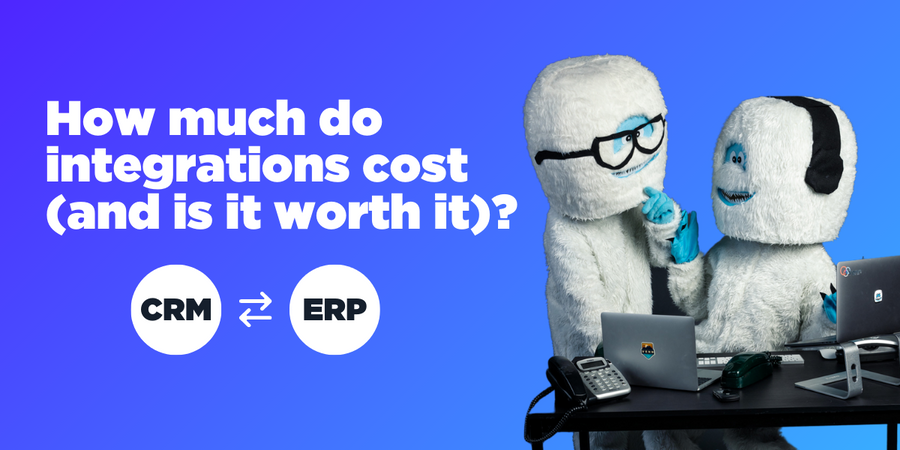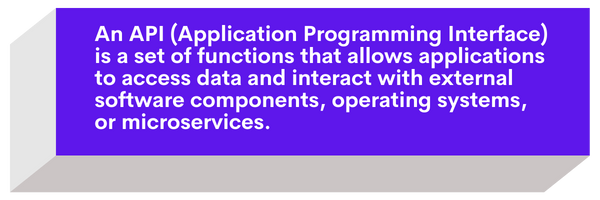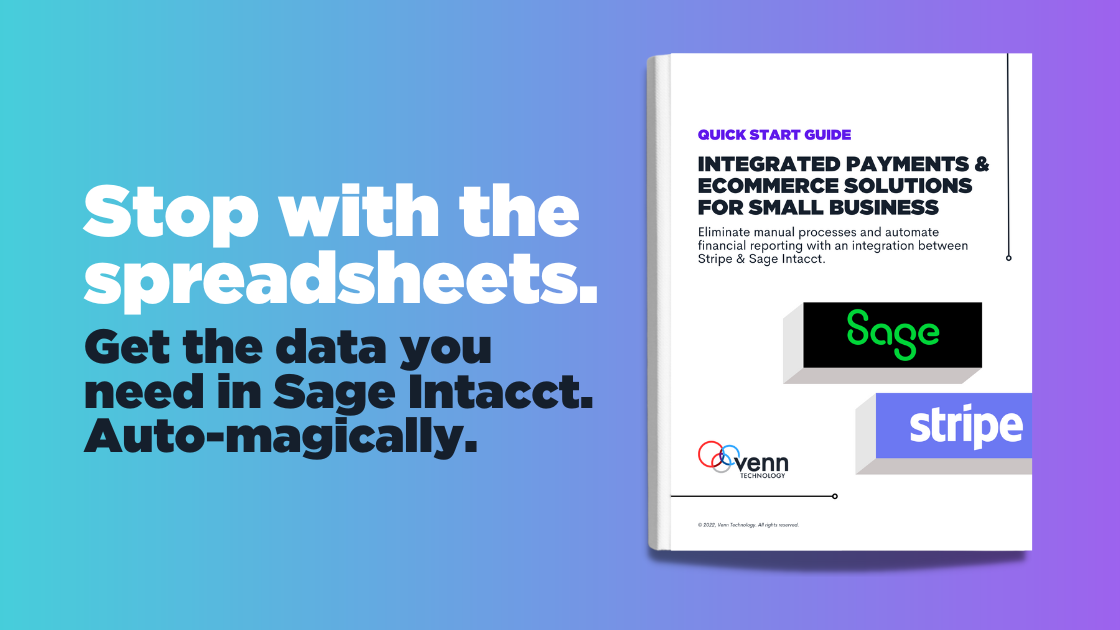How much do integrations cost (and is it worth it)?
Written byRandle Haggerty

Software integration is the process of connecting disparate systems in order to improve cross-platform visibility and eliminate time-wasting, manual processes. Integrating core business applications comes with a lot of benefits, but more importantly, it keeps teams working in the systems they’re best at and helps organizations avoid the need to purchase more licenses.
In this blog, we break down what goes into an integration project, the different methods of building them, and ways to reduce costs. Plus, we share which integrations can give your organization the most value.
Jump to a section:• How much do integrations cost?• What goes into an integration project? • Are integrations worth the price? • Which automated workflows are the most valuable? |
How much do integrations cost?
Within recent years, many organizations have gone through a series of disruptions. From workplace changes to inflation, business leaders are prioritizing automation investments more than ever to accelerate processes and gain more predictability.
When it comes to integrating systems, the price depends on a number of factors:
We'll dive deeper into these questions later in the blog, but for now, here’s a ballpark estimate of common integration types:
In-app Integrations (Free to $)
Most Software as a service (SaaS) applications offer both free and paid integrations or in-app “connectors.” These can be found in the platform itself or on an app marketplace. For example, HubSpot has an upwards of 45 free connectors on its App Marketplace for its users to be able to connect Gmail, Google Calendar, WordPress, Zoom, and more at no charge.
That said, be weary of integrations that are light on documentation. They tend to cover a single use case that might not be what you’re looking to achieve.
In-app integrations estimated cost: Free and paid options (varies by publisher)
Standard Integrations ($$)
These types of integrations are typically created by third-party providers. They address the most common use cases between apps and can be quickly implemented. Since they’re pre-packaged, this means a developer has already mapped out fields and workflows for people to use. Although this method cuts on time and money, users are limited to how the integration was set up—unless the integration publisher gives the option to add custom fields.
Additionally, standard integrations typically mean standard technical support. For example, most of our clients have needs that go deeper into the systems they’re using. In situations where the integration developer may not know the ins and outs of the platform they’re connecting to, you might require more dedicated support to address any nuances that come up.
Standard integrations estimated cost: $5,000-$15,000
Standard Workflows ($$)
Standard workflows is a term we at Venn use to address the most common choke points in business processes. These workflows help automate typical processes such as Quote-to-Cash, Quote-to-Contract, and more. With the ability to implement multiple workflows across commonly integrated platforms (ie. Stripe to Sage Intacct), we’re able to solve more specific challenges.
Standard workflows are similar to standard integrations, but rather than focus on app-to-app solutions, we put more emphasis on specific processes. We then use that to build the integration between apps (not the other way around).
Standard workflows estimated cost: $5,000-$15,000
Custom Integrations ($$$)
Getting into a more personalized solution, the price can vary depending on a number of factors: (1) The method you’re using to connect the apps (ie. middleware), (2) complexity of the workflows, data, and level of effort for someone to build it, and (3) ongoing support or service plans to maintain the integration.
The bottom line is, time equals money, and the complexity can make a significant impact on the cost of the project. Although more expensive than pre-built options, outsourcing custom integrations has its benefits. Considering the average annual salary for an integration developer in the United States is roughly $100,000, many mid-size organizations find outsourcing to be a more affordable alternative. Even for teams with access to an in-house developer, it doesn’t always make sense to take them away from other projects on their plate.
Custom integrations estimated cost: $20,000-$100,000+
What goes into an integration project?
If the plan is to outsource to an integration services provider, it’s important to consider choosing one that aligns with your organization. Think of this as more of a partnership rather than a one-time purchase. Both your business and technology can change in the future, so you’ll need a go-to expert on your side when it does.
At Venn Technology, we’ve perfected our own project methodology, Integration Trailhead, consisting of six phases:
Every project begins with a discovery phase where project managers and integration consultants spend time deeply understanding the client’s processes—later developing a course of action based on the client’s requirements.
There is a one-time implementation fee for the integration project, which includes project hours to cover the resources it takes to build the integration. After deployment, every client receives three months of customer support. Once this expires, there’s an opportunity to purchase a service plan for future maintenance, updates, and customizations to the integration.
Are integrations worth the price?
There’s three factors that we believe will make or break an integration project: People, Processes, and Technology. When you put too much focus on technology, there’s less focus on solving the problems people are facing due to their manual processes.
We believe in exploring our clients’ processes through and through, but it’s very important for organizations to take a regular inventory on their own of what software and tools they’re using. Doing this can help in identifying unused licenses, excess spending, and redundancy.
In deciding if integrations are worth the price, keep the end in mind and ask yourself:
"When properly integrated, our systems will ____."
If teams are having to hand-key data, what tasks could they be working on instead with more time back? When systems are tightly integrated, automation can help teams receive cleaner and more accurate data in real-time—you know what that means: easier forecasting and tracking.
What is the ROI on the cost of an integration?
Your return on investment calculation should be something you consider with near term and long term lenses. We typically work with clients to calculate the ROI of an integration by evaluating how much time is currently spent doing processes manually. Typically we see less than 1 year ROIs when a single individual is spending more than 5-10 hours a week manually integrating.
Also something to consider: having timely and accurate data will help sales teams sell faster and accounting teams collect faster.
Which automated workflows are the most valuable?
Integrations between apps can add a ton of value at any organization struggling with a manual data entry disaster. When humans hand key information, there's always room for error. So, automating processes can eliminate errors and more importantly, give teams valuable time back.
Over the years, we've helped clients save 1,000 hours of work annually or even bring their accounting back in-house after implementing an integration. Automation is best used in places of the business where “personal touch” from the team isn’t needed. Here are some automated workflows worth noting:
We didn't forget about you nonprofits out there. Here are automated workflows that may help your use case:
Getting started
If you’re planning to build an integration in-house, you’ve got this. For organizations needing an integration and automation expert, Venn Technology is here for you. Our goal is to help midsize organizations and software developers implement systems and automated workflows that free people to focus on what they’re best at—not on the manual workarounds holding them back.
We can integrate any software or cloud tool that has an API. Interested in finding the right solution for your specific use case? Book a 1:1 meeting with us.

About the Author
Randle Haggerty
Marketing Manager



